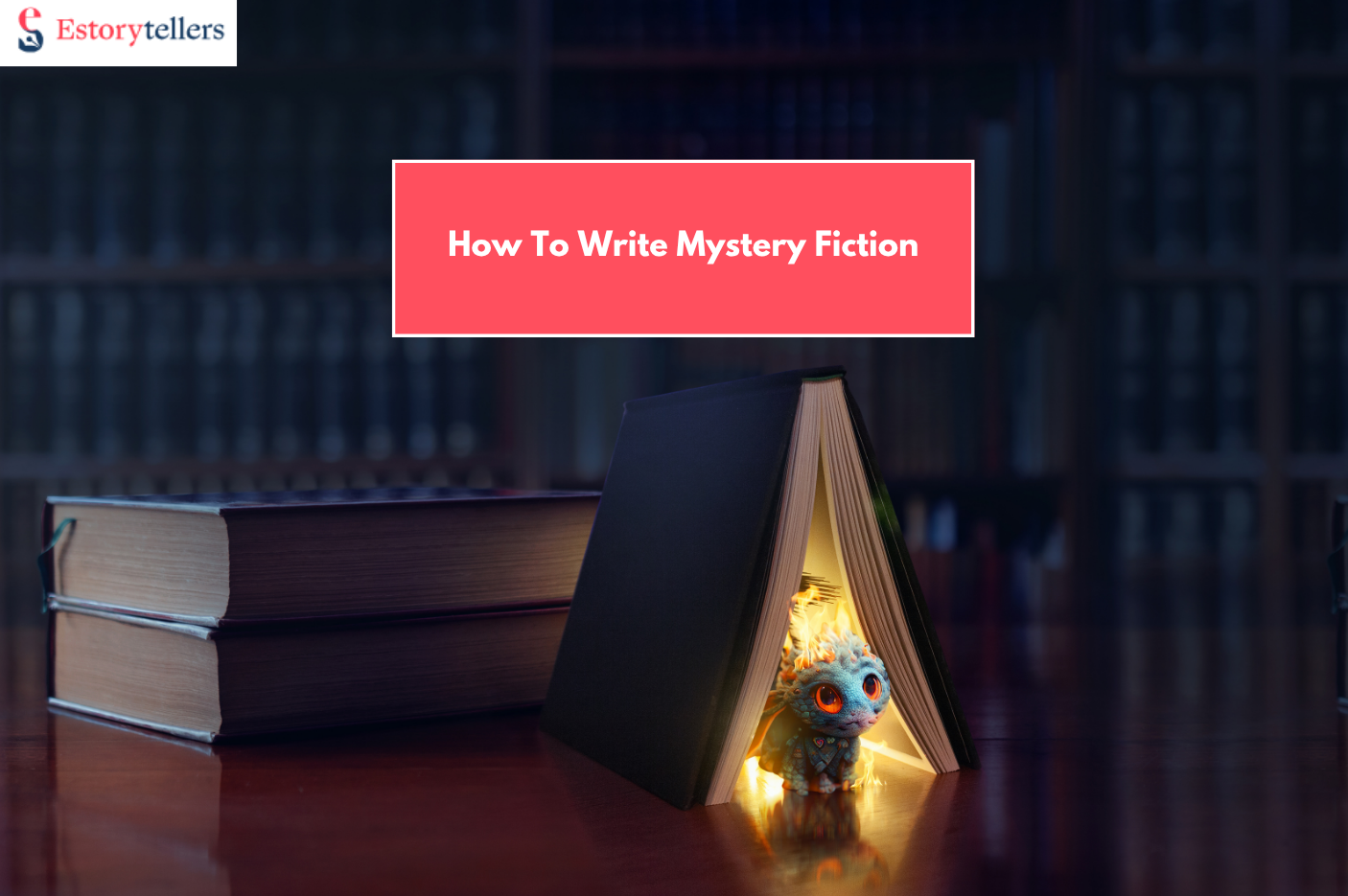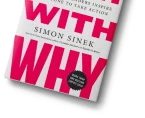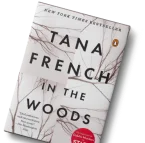
To write mystery fiction that captivates readers, you need three essentials: a compelling puzzle, believable characters, and carefully planted clues. Start by defining the central mystery—often a crime, secret, or unanswered question. Then, build layered characters with motives and flaws, making each a possible suspect. Use red herrings to mislead, but ensure your solution is fair and foreshadowed so the reader feels rewarded, not tricked.
In this guide, you’ll learn everything step by step: how to design your hook, structure suspense, balance clues with misdirection, craft a powerful climax, and polish your manuscript. We’ll also cover how to publish your mystery novel—whether through self-publishing, traditional houses, or with the support of Estorytellers, who help writers with ghostwriting, editing, publishing, and global marketing.
Craft Thrillers That Keep Readers Awake
Our team helps you design nail-biting plots, unforgettable characters, and endings no one sees coming.
Start My ThrillerWhat Makes a Great Mystery Fiction Story?
A successful mystery isn’t just about “who did it”—it’s about how you tell the story and keep readers turning pages. Here are the core elements every strong mystery fiction needs:
1. A Central Puzzle
At the heart of every mystery is a problem to solve: a murder, a theft, a disappearance, or a hidden truth. The question must be intriguing enough to hook readers right away.
2. High Stakes
Readers should feel that solving the mystery matters. It could mean justice for a victim, saving a community, or exposing a dangerous secret. The higher the stakes, the stronger the suspense.
3. Complex Characters
Great mysteries thrive on layered characters. Give suspects believable motives, flaws, and secrets. Even your detective or protagonist should feel human—brilliant but imperfect.
4. Clues and Red Herrings
Sprinkle clues throughout the story so readers can play detective. Balance this with red herrings—misleading hints that create doubt—without making the ending feel unfair.
5. A Satisfying Resolution
The ending should surprise readers but also feel inevitable. When they look back, the clues should line up perfectly, leaving them saying, “Of course!”
How to Start Writing a Mystery Story
Beginning a mystery novel is all about pulling readers in fast and setting up the puzzle they can’t resist. Here’s how to do it step by step:
1. Start with a Hook
The first chapter should raise a big question. A body in a locked room, a vanishing witness, or a strange letter—your opening scene should immediately spark curiosity.
2. Introduce the Stakes
Show why solving the mystery matters. Is someone in danger? Is there a secret that could destroy lives? Stakes create urgency and keep readers invested.
3. Create a Memorable Protagonist
Decide who will investigate the mystery. It could be a detective, a journalist, or an ordinary person caught in extraordinary circumstances. Make sure they have flaws, doubts, and personal reasons to care.
4. Outline the Puzzle Early
Think of your story as a game. What’s the central crime or lie? Who are the suspects? Where will the clues hide? Even if you don’t plan every detail, sketching the core mystery keeps your story tight.
5. Set the Tone
Mysteries can be dark and gritty, cozy and lighthearted, or psychological and chilling. Your first chapters should make the mood clear so readers know what kind of journey they’re on.
Master the Art of Red Herrings
We guide you in adding clever misdirections that keep readers guessing until the very end.
Add Clever TwistsCrafting the Perfect Central Mystery
At the heart of every mystery novel is one powerful question: What really happened? Crafting this central puzzle is the key to keeping readers hooked.
1. Define the Core Question
Decide if your story is about solving a crime, uncovering a secret, or exposing a lie. This is the thread that will guide the entire plot.
2. Make It Personal
The mystery should connect deeply to your protagonist. Maybe the victim is someone they know, or the secret challenges their own beliefs. When the stakes are personal, readers feel the tension more strongly.
3. Add Layers of Complexity
Avoid a flat, one-dimensional puzzle. Strong mysteries include multiple suspects, conflicting motives, and clues that can be interpreted in different ways.
4. Balance Fairness and Surprise
Readers should feel like they could solve the puzzle if they pay attention—but your reveal should still take them by surprise. Plant clues early, then disguise them with context or red herrings.
5. Tie It to Theme
The best mysteries aren’t just about “who did it” but also “why it matters.” Let the central question reflect a bigger theme—justice, morality, or human weakness—so your story resonates beyond the final twist.
Clues, Red Herrings, and Misdirection
A mystery novel works like a puzzle—you give readers the pieces, but you decide how they fit together. To keep them guessing, you’ll need two tools: clues and red herrings.
1. Planting Clues
Clues are the hidden truths that point to the solution. The trick is to make them visible but not obvious. A diary entry, a broken watch, or a slip in dialogue can all be clues. Readers should look back at the ending and think, “It was there all along.”
2. Using Red Herrings
Red herrings are false leads—details that seem important but aren’t. A shady neighbor, a mysterious phone call, or a misleading alibi can keep readers second-guessing. But make sure red herrings are believable, not random distractions.
3. Timing is Everything
Don’t reveal all your cards too soon. Scatter clues throughout the story and mix them with red herrings so readers never know which details matter most.
4. Play Fair
Your readers want to solve the puzzle. Hide clues, disguise them, even misdirect—but don’t cheat. The ending should feel earned, not forced.
Build Characters with Secrets
Our experts help you create layered suspects, each hiding something that fuels your mystery’s intrigue.
Develop My CastBuilding a Compelling Protagonist
A mystery is only as strong as the character trying to solve it. Readers don’t just follow the puzzle—they follow the person chasing the truth.
1. Give Them Personal Stakes
Your protagonist should have a reason to care. Maybe the victim is a friend, maybe they’ve been wrongly accused, or maybe solving the case is tied to their career or redemption.
2. Add Flaws and Contradictions
Perfect detectives are boring. Make your lead human—give them doubts, blind spots, or weaknesses. A character who struggles feels real and relatable.
3. Make Their Arc Mirror the Mystery
As the truth unfolds, your protagonist should change too. The external mystery (solving the crime) should connect with their internal journey (overcoming guilt, fear, or mistrust).
4. Surround Them with Strong Supporting Characters
Sidekicks, rivals, suspects, and villains all shape how your protagonist develops. Each interaction should push them closer—or further—from the truth.
5. Keep Them Memorable
Whether it’s Sherlock Holmes’ sharp logic or Lisbeth Salander’s rebellious intelligence, great protagonists stand out. Give yours a unique voice, outlook, or method that readers won’t forget.
How to Build Suspense Chapter by Chapter
Mystery fiction isn’t about constant action—it’s about constant tension. Every chapter should keep readers leaning forward, eager for what comes next.
1. End Chapters with Questions
Cliffhangers don’t need explosions. A sudden doubt, a hidden detail, or an unexpected silence can be just as powerful.
2. Reveal Answers That Lead to Bigger Mysteries
When you solve one question, make sure it opens another. This “ladder of suspense” keeps momentum alive.
3. Play With What the Reader Knows
Sometimes the reader should know more than the protagonist (dramatic irony). Other times, keep them in the dark. This push-and-pull creates irresistible tension.
4. Give Every Scene a Secret
Someone should always know more than they’re saying. When each scene hides something, readers can’t help but keep turning the pages.
5. Control Pacing With Purpose
Mix slower, thoughtful moments with high-stakes scenes. This rhythm prevents fatigue while keeping suspense sharp.
Outline Mysteries That Flow
From opening hooks to shocking revelations, we help you map a structure that keeps readers hooked.
Outline My StoryWriting the Big Reveal and Plot Twist
Every mystery builds toward the reveal—the moment when all the pieces finally click. To make it satisfying, your twist must feel both surprising and inevitable.
1. Play Fair With Readers
All clues should be present, even if hidden in plain sight. The twist should reward careful attention, not feel like a cheat.
2. Make It Emotional
A great reveal isn’t just logical—it hits the heart. The truth should change how readers see the characters, not just the crime.
3. Reframe the Story
The best twists don’t just answer “who did it.” They recontextualize everything—suddenly, past scenes take on new meaning.
4. Keep It Earned
Avoid randomness. The reveal must grow naturally from the characters’ motives, lies, and choices.
5. Land With Impact
End the scene with power. Use dialogue, silence, or a shocking visual detail to make readers remember the moment long after the page.
Conclusion: How to Write Mystery Fiction
Writing mystery fiction means more than planting clues or hiding the culprit but it’s about giving readers an experience where every chapter matters, every detail could be a clue, and the final reveal feels both shocking and inevitable.
To write a mystery that grips:
- Start with a strong hook, crime, or lie that drives the central question.
- Plant clues and red herrings with care, so readers feel challenged but never cheated.
- Build a compelling protagonist with personal stakes, flaws, and growth.
- Shape suspense chapter by chapter, ending on questions and secrets that keep readers turning pages.
- Craft a big reveal that redefines everything the reader thought they knew.
- Finally, polish your book and decide between traditional publishing or self-publishing, making sure your cover, blurb, and formatting meet professional standards.
With the right mix of structure, suspense, and character depth, your mystery won’t just entertain—it will stick with readers long after the last page.
And if you want expert guidance, Estorytellers is here to help with brainstorming, ghostwriting, editing, publishing, and marketing—so your story can move from a draft to a published mystery that readers can’t put down.






























